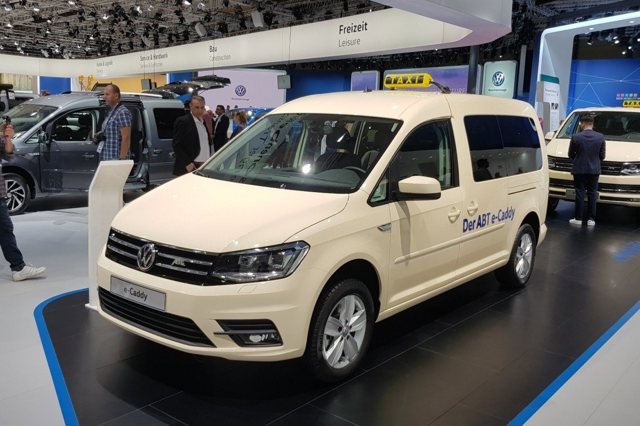Volkswagen e-Caddy (2019 – 2021) Review
Volkswagen e-Caddy (2019 – 2021) At A Glance
Designed for businesses who want a van for short runs and/or multi drop deliveries in towns and cities, the e-Caddy features similar tech to the e-Crafter with its front-mounted electric motor being powered by a lithium-ion battery pack placed under the load floor in the rear.
The e-Caddy is the brainchild of ABT Sportline - the electric motor sport specialists behind the Audi Sport Formula E Team - with Caddy chassis being sent to ABT's German plant to be converted. The entire electric powertrain is developed in-house by ABT, while the van is sold and supported by Volkswagen's dealer network.
Despite its motor sport origins the small electric van is designed for commercial life, with a load are of 4.2 cubic metres. Limited to Maxi longwheel base only, the maximum payload is 100kg lower than the diesel van at 635kg. Volkswagen also offers the e-Caddy as a seven-seater MPV, with rear windows (pictured).
The 109PS electric motor is predominantly designed for low-speed runs, with a limited to a top speed of roughly 70mph. Charging times take five hours, when connected to a 7.2kw wallbox, or 49 minutes (from zero to 80 per cent) when hooked up to a 40kw fast charger.
Model History
September 2018
Volkswagen launches e-Caddy.
The electric van is built in partnership with ABT Sportline and is available as a panel van or five-seater MPV.
A 82-kW electric motor operates in the e-Caddy. The electric motor is supplied with electricity from a lithium-ion battery. Energy capacity: 37.3kWh. The e-Caddy, which has a top speed of 120 km/h, will be one of the most spacious electric vehicles in its class with a cargo compartment volume of 4.2 cubic metres.
Power is transmitted via an automatic single-speed gearbox. A fully discharged battery can be charged to 100 per cent in less than six hours at a charging power of up to 7.2 kW (e.g. at wallboxes). Using the quick charge method at 40 kW, the battery can be charged to 80 per cent capacity in just 49 minutes.
The e-Caddy can be configured as a commercial vehicle in the form of the panel van (no windows at rear) and kombi (with rear windows) – or as a passenger carrying vehicle.


 Zero tailpipe emissions, car-like refinement, high quality cabin, available as panel van or seven-seater MPV.
Zero tailpipe emissions, car-like refinement, high quality cabin, available as panel van or seven-seater MPV.
 Limited range of 137 miles,UK launch date has been pushed back to mid-2020.
Limited range of 137 miles,UK launch date has been pushed back to mid-2020.